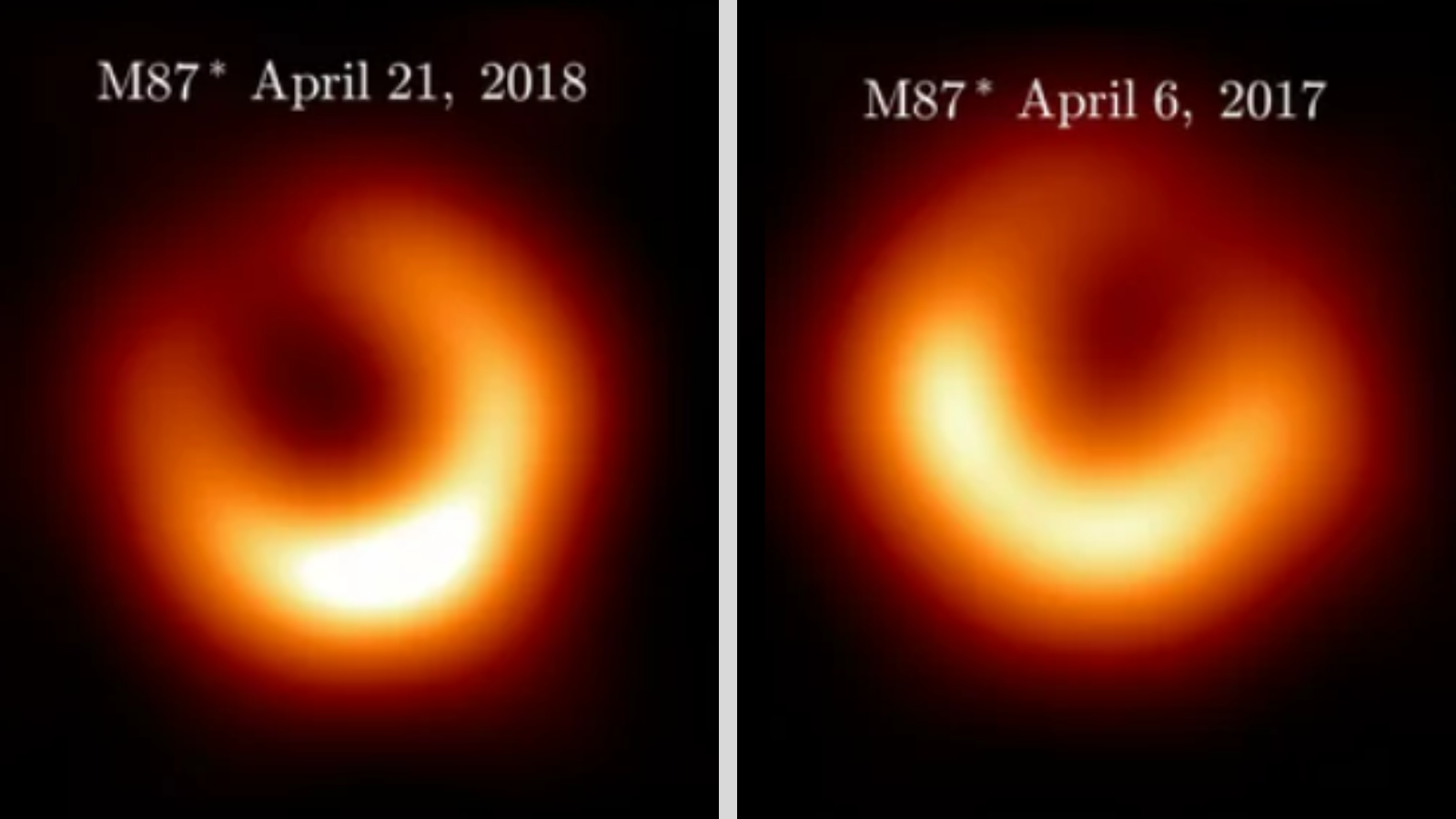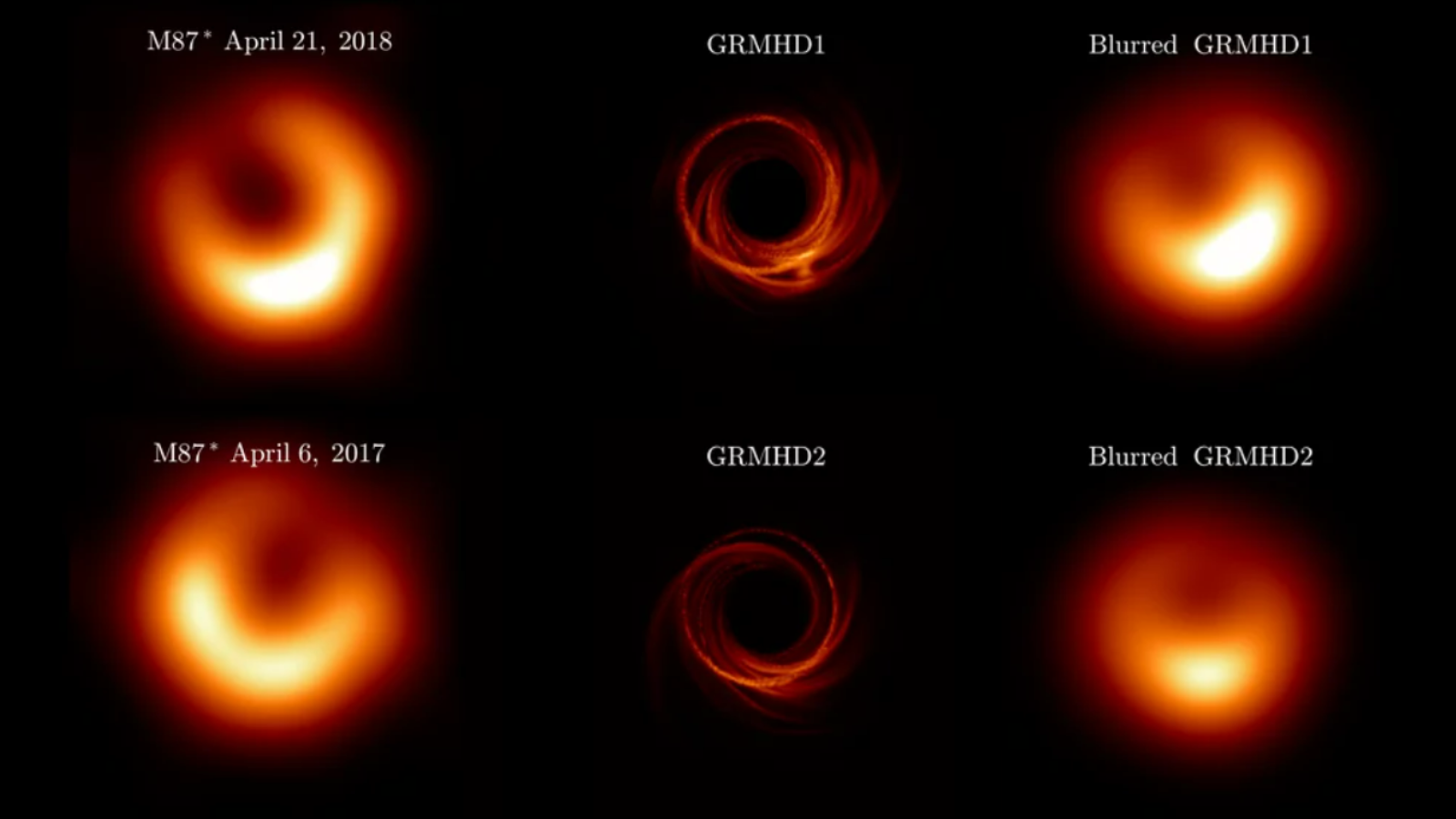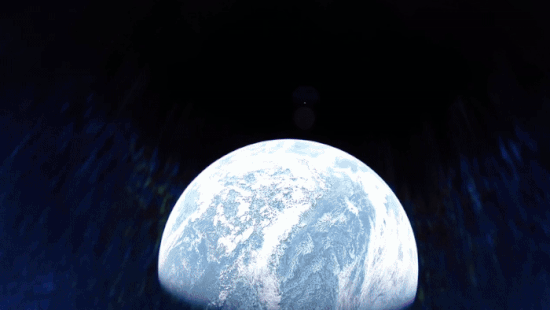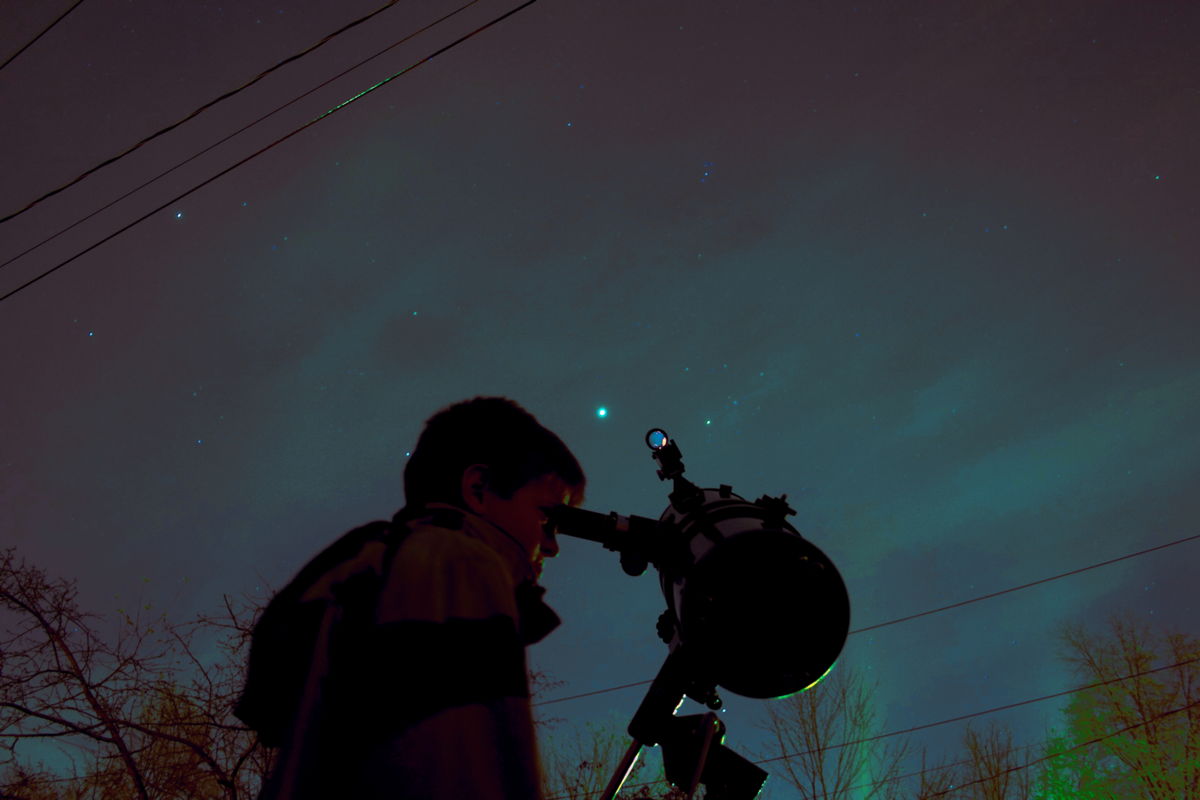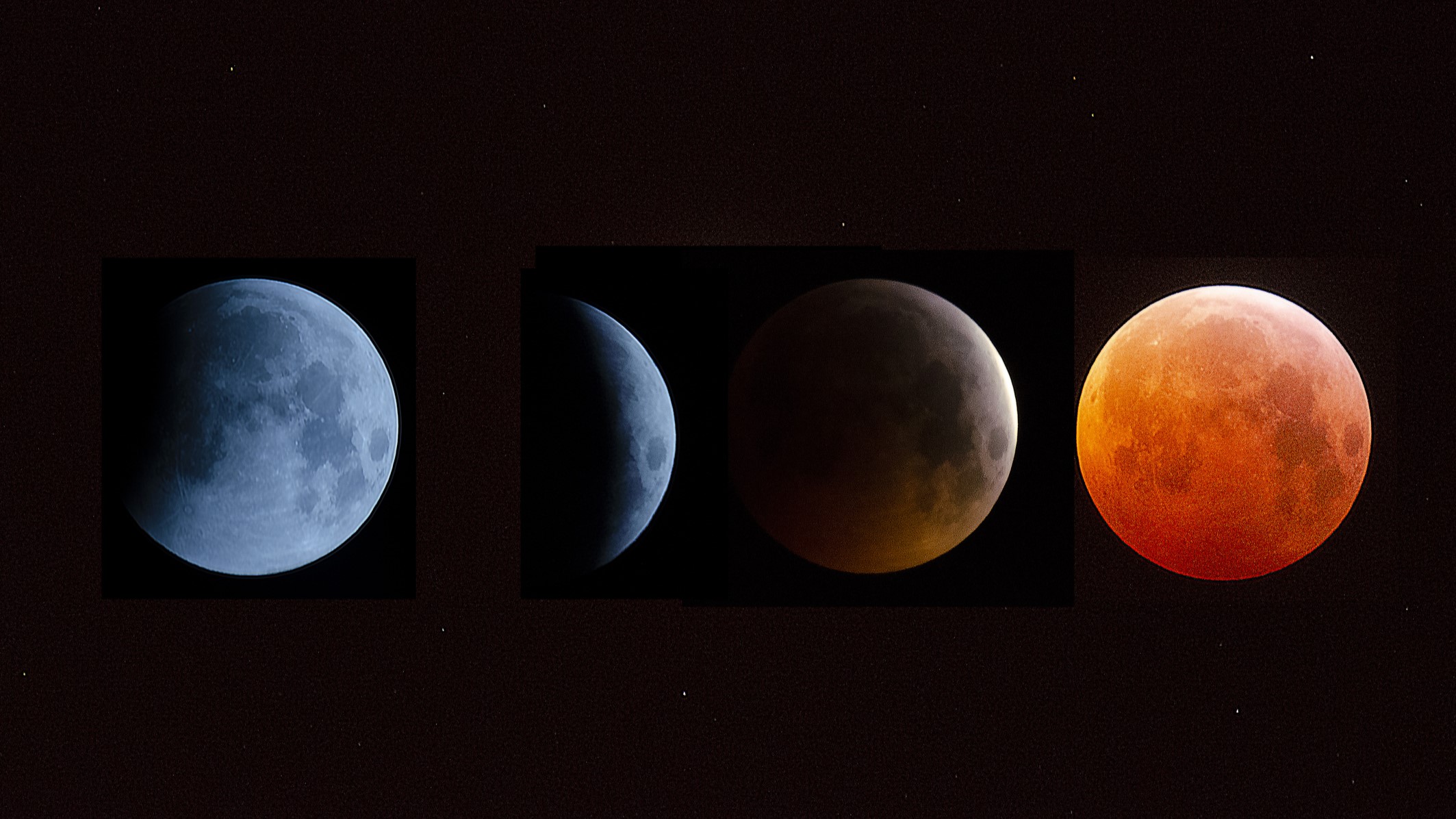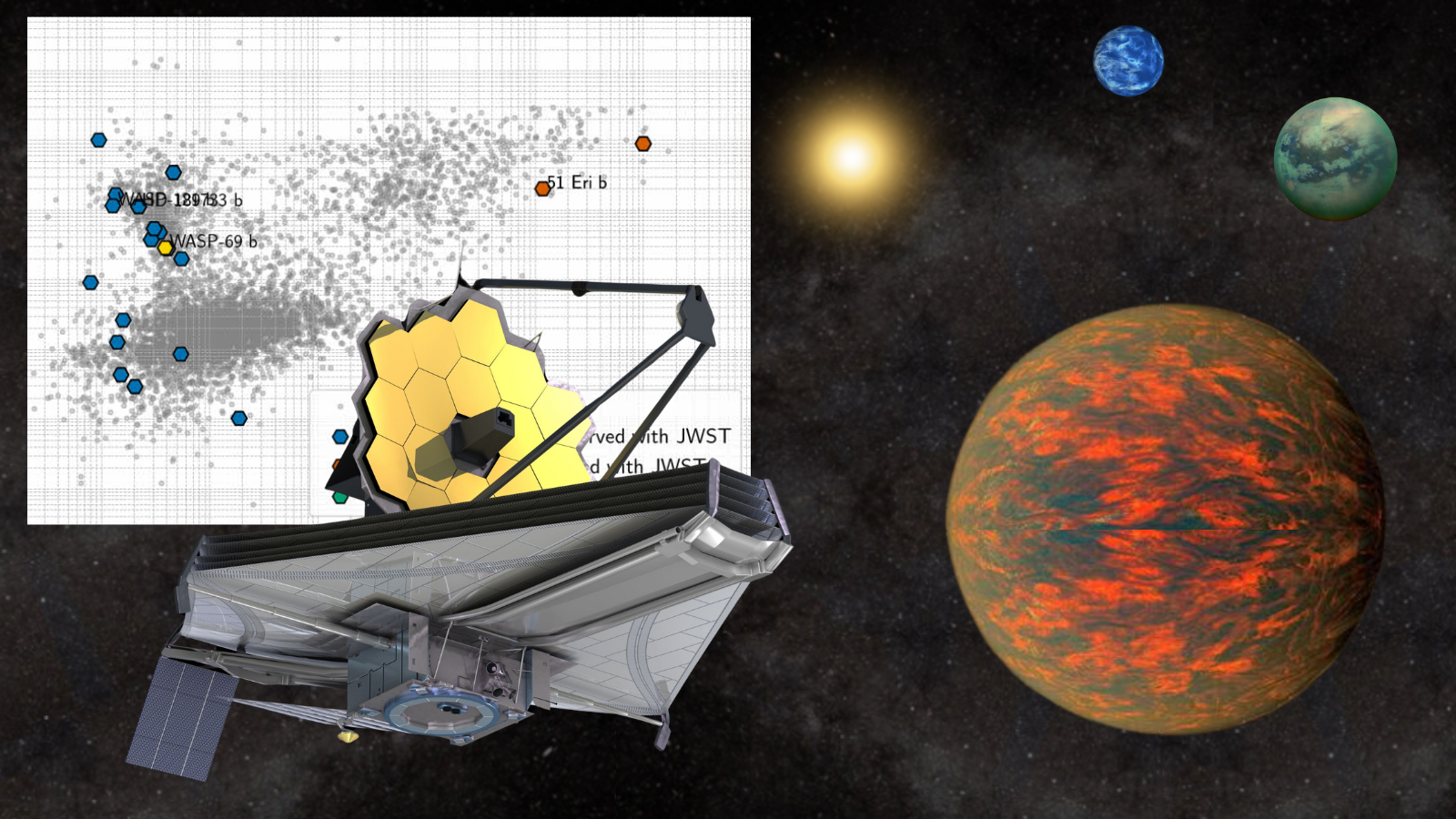It may have been the first black hole imaged by humanity, but the eating habits of the supermassive black hole M87* aren’t pretty.
That is what astronomers discovered when assessing turbulence in the stream of matter, or “accretion flow,” feeding the supermassive black hole located 55 million light-years from Earth at the heart of the galaxy Messier 87 (M87). The team was also able to determine that the axis around which M87* rotates points away from Earth.
This in-depth analysis of M87*, which has a mass equivalent to that of 6.5 billion suns, and the structure and dynamics of the superheated gas or “plasma” at its outer edge, or event horizon, was possible thanks to observations made by the Event Horizon Telescope in April 2017 and April 2018. These images facilitated a multi-year analysis using an improved and expanded set of computer simulations.
“The 2018 observations, in conjunction with 2017 data, reveal a nuanced picture of M87*’s accretion flow,” Eduardo Ros, team member and a researcher at the Max Planck Institute for Radio Astronomy (MPIfR), said in a statement. “The study underscores the evolving nature of the plasma structures near the event horizon, offering clues about the variability mechanisms that govern black hole environments.”
“This iterative process of modeling and observation is critical for unraveling the mysteries of black hole environment dynamics,” Ros added.
A year in the life of a supermassive black hole
The first image of M87* — and humanity’s first image of any black hole, for that matter — was taken by the EHT in 2017 and released to the public in 2019. It was notable for its bright golden ring, which represents plasma whipping around the black hole’s event horizon at near the speed of light.
One of the most startling aspects of this image of M87* was how closely it resembled theoretical predictions made using Albert Einstein’s theory of gravity, general relativity.
That ring was still present in the 2018 observations, but since the 2017 ones, its brightest section had shifted counterclockwise by about 30 degrees. The shift resulted from turbulence in the plasma ring around M87*, scientists believe.
“The black hole accretion environment is turbulent and dynamic. Since we can treat the 2017 and 2018 observations as independent measurements, we can constrain the black hole’s surroundings with a new perspective,” Hung-Yi Pu, team member and a researchers at the National Taiwan Normal University, said in the statement. “This work highlights the transformative potential of observing the black hole evolving in time.”
Using three times the data available in 2017, the EHT team studied models of how M87* was feeding, or “accreting,” in both years.
When matter is fed to a black hole from the flattened cloud of matter around it called an accretion disk, that matter can spiral inwards in the direction that the black hole spins in — or, it can feed inwards in the opposite direction.
The changes between the M87* images from 2017 and 2018 seem to conform to gas flowing inwards and against the rotation of the monster black hole.
The team’s findings, combined with the 2023 observations of the shadow of M87* made by the Global Millimeter VLBI Array (GMVA), build a more detailed picture of this monster’s black hole, its environment and its dynamics.
“This study highlights the significance of incorporating larger and more diverse simulation sets in the investigation of the supermassive black hole,” Christian M. Fromm, member of the EHT theory group and a MPIfR researcher, said in the statement. “By integrating multi-epoch data with advanced models, we can better understand the dynamical processes driving the brightness variations observed near M87*.”
The EHT team is continuing to examine data collected by the Earth-sized telescope array in 2021 and 2022 to obtain deeper insights into the turbulent flow of plasma around M87*.
“This approach paves the way for future studies focusing on the complex interplay of plasma dynamics and black hole spin.”
The team’s research was published on Wednesday (Jan. 22) in the journal Astronomy & Astrophysics.

